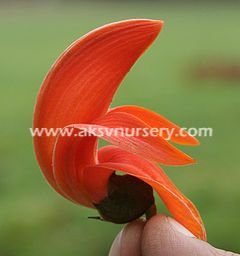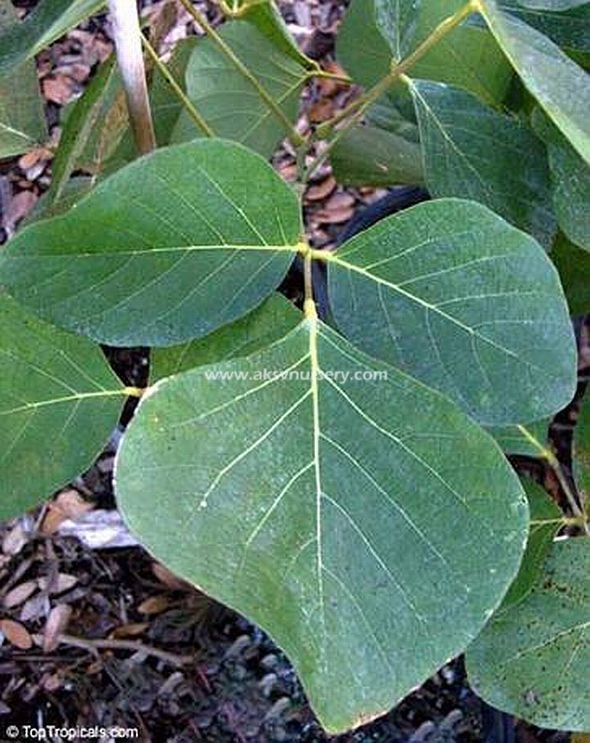Butea monosperma, Butea frondosa, Erythrina monosperma
Family: Faboideae / Leguminosae / Papilionaceae
Flame of the Forest, Dhak, Palas, Bastard Teak, Parrot Tree
Origin: India, Sri Lanka
This tree has stunning flower clusters. In the habitat it can grow tall, but can be grown in container as a small specimen tree. The trunk is very interesting, it becomes twisted, follows no particular pattern, making it a conversation piece. At the base it can form a bottle-like caudex if grown in a pot. It is slow growing and attains a height of about 15-20 ft when mature at the age of about 50 years or so. The bark of Dhak is fibrous and bluish gray to light brown in color. It exudes a kind of red juice when injured. That dries into a very useful gum. The leaves are large, up to 1 ft wide and long, compound, each has three leaflets with tough texture: coriascious with the surface glabrescent above and hairy silken beneath. The leaves fall off by December and reappear during spring. When the tree is leafless, it bears flaming orange to red-colored flowers appearing in February and stay on nearly up to the end of April. The flowers form a gorgeous canopy on the upper portion of the tree, giving the appearance of a flame from a distance. The fruit of palas is a flat legume; young pods have a lot of hair a velvety cover. The mature pods hang down like peculiar legumes. This plant is useful in many ways. Its leaves are essential for various religious rituals in Hindu homes. These are also used as cheap leaf plates and cups for rural feasts. In some parts of the country these are used for wrapping tobacco to make biddies. These are further used as packing material for parcels. The cattle also eat the Dhak foliage quite greedily.The bark of Dhak yields a kind of coarse and brown colored fiber, which is used for rough cordage. Butea gum is a dried astringent juice obtained from incisions in the stem of the tree. The juice exuded by the bark hardens in to brittle ruby colored gum beads. This gum is sanctioned to be used as a substitute for the kino gum. It finds use for caulking boats as well. The Dhak flowers yield an orange dye. The seeds are used in Ayurvedic and Unani medicine for treating a number of human maladies. The Dhak tree acts as a host for lac insect and is, therefore, useful in producing natural lac. Use it as a specimen, or as a background component of the canopy. The tree loses its leaves as the flowers develop, in January – March. The plant has a good salt-tolerance, it can be used in coastal areas, but protect from direct exposure to salt spray, which will burn the leaves.






